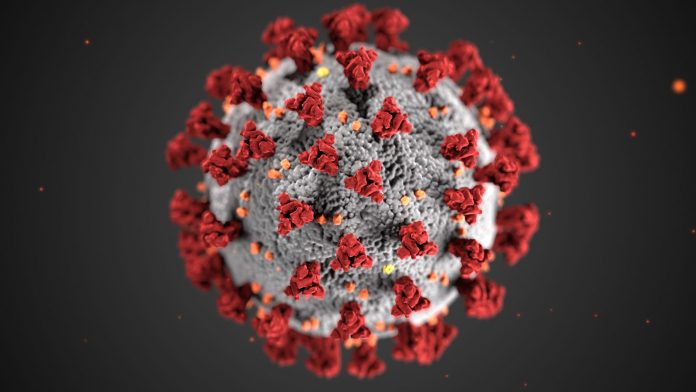If you have a runny nose or itchy eyes, it doesn’t mean you have the novel coronavirus.
However, if you have a dry cough, fatigue, and a fever, you might have COVID-19.
Then again, it could also be seasonal flu.
“Not all symptoms are created equally. While it might seem like you have coronavirus, you may simply be experiencing seasonal allergies or influenza,” Lindsey Elmore, PharmD, a board-certified pharmacotherapy specialist and host of “The Lindsey Elmore Show,” told Healthline.
“There are many symptoms of cold, flu, and COVID that are similar, and it may be difficult to distinguish,” added Ramzi Yacoub, PharmD, chief pharmacy officer of the prescription savings service SingleCare. “They’re all caused by viruses, but different viruses cause each of these infections.”
“However, one key difference between the three is a symptom of coronavirus is shortness of breath,” Yacoub told Healthline. “Shortness of breath is a common sign of COVID-19 which occurs prior to the development of pneumonia. Generally, the flu or a cold does not cause shortness of breath unless it has progressed to pneumonia, in which case you’ll also want to contact your healthcare provider.”
Dr. Subinoy Das, chief medical officer at Tivic Health, said the common cold rarely causes shortness of breath after fever develops.
“Influenza does mimic COVID-19 very closely, but the shortness of breath is not usually as severe as it is with COVID-19,” Das told Healthline.
With COVID-19, shortness of breath often occurs 5 to 10 days after the first sign of fever, Das said.
Sneezing isn’t a symptom
Sneezing, runny nose, facial pain, postnasal drip, and itchy eyes are common symptoms of allergies or the common cold.
But they’re not typical of COVID-19.
“The most common symptoms of COVID-19 are fever, tiredness, and dry cough,” according to the World Health Organization (WHO)Trusted Source. “Some patients may have aches and pains, nasal congestion, runny nose, sore throat, or diarrhea.”
“In a report from China of more than 1,000 patients, nasal congestion was seen in only one out of every 20 patients,” Dr. Kristine S. Arthur, an internist at MemorialCare Medical Group in Laguna Woods, California, told Healthline.
COVID-19 symptoms usually appear 2 to 14 days after exposure.
However, “Some people become infected but don’t develop any symptoms and don’t feel unwell,” according to the WHO.
These people can still transmit the virus to those around them, even if they don’t feel ill.
Allergies have chronic symptoms
COVID-19, like the flu or common cold, is an acute illness, meaning people feel fine until symptoms start showing up.
Allergies, on the other hand, “are usually chronic, presenting with symptoms off and on for weeks, months, or even years,” Dr. David M. Cutler, family medicine physician at Providence Saint John’s Health Center in Santa Monica, California, told Healthline.
Experts also noted that, in most parts of the country, it’s not allergy season yet.
“Allergies should not cause a fever or body aches,” Arthur said. “Generally, [there is] no cough unless you have a lot of nasal drainage.”
Allergies also may cause wheezing, she added, especially in people with asthma.
“Allergy symptoms tend to vary with the environment: worsening with exposure to dust, pollen, or animal dander, whereas cold symptoms tend to persist regardless of time of day, weather, locality, or other environmental factors,” Cutler said.
Also, as with COVID-19, “Colds are more likely to have generalized symptoms like fever, headache, and body aches, whereas allergies usually affect only the respiratory tract,” Cutler said. “Allergy symptoms tend to improve with antihistamine and other allergy-specific medication. Colds are more likely to respond to decongestants, acetaminophen, fluids, and rest.”
Despite symptoms, it’s not the flu
COVID-19 is not the flu.
As one of a class of pathogens known as coronaviruses, it’s actually more closely related to the common cold than the seasonal flu.
However, despite some overlap, the typical symptoms of COVID-19 are more similar to the flu (fever, cough, sore throat, runny or stuffy nose, muscle or body aches, headaches, fatigue) than the common cold (runny or stuffy nose, sore throat, cough, congestion, slight body aches, mild headache, sneezing, low-grade fever, malaise).
“In terms of differentiating between flu and COVID-19, it can be almost impossible to distinguish,” Dr. Jake Deutsch, co-founder and clinical director of Cure Urgent Care centers and Specialty Infusion in New York. “That’s why people are recommended to have flu vaccinations so it can at least… minimize the risk of flu in light of everything else. Fevers, body aches, coughing, sneezing could all be equally attributed to them both, so it really means that if there’s a concern for flu, there’s a concern for COVID-19.”
If you have a mild case of COVID-19, the flu, or a cold, treatment is geared toward management of symptoms, said Cutler.
“Generally, acetaminophen is recommended for fevers,” he said. “Cough drops and cough syrups can also help keep mucus secretions thinner. If there is associated nasal congestion, antihistamines may be useful.”
























